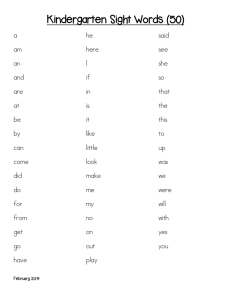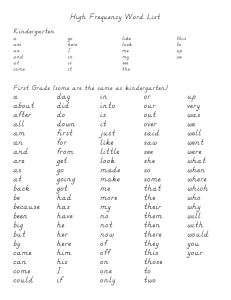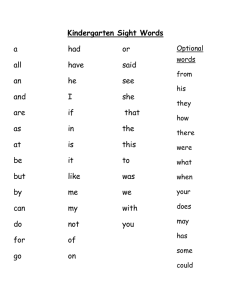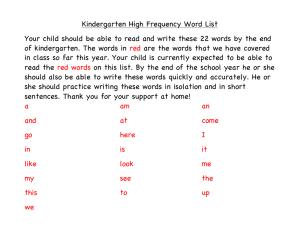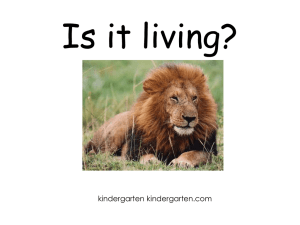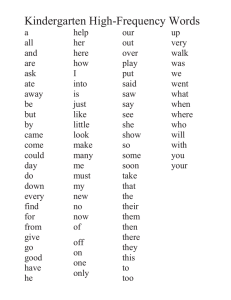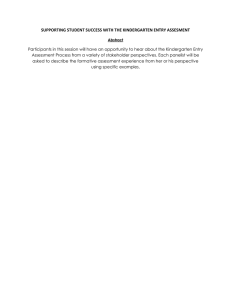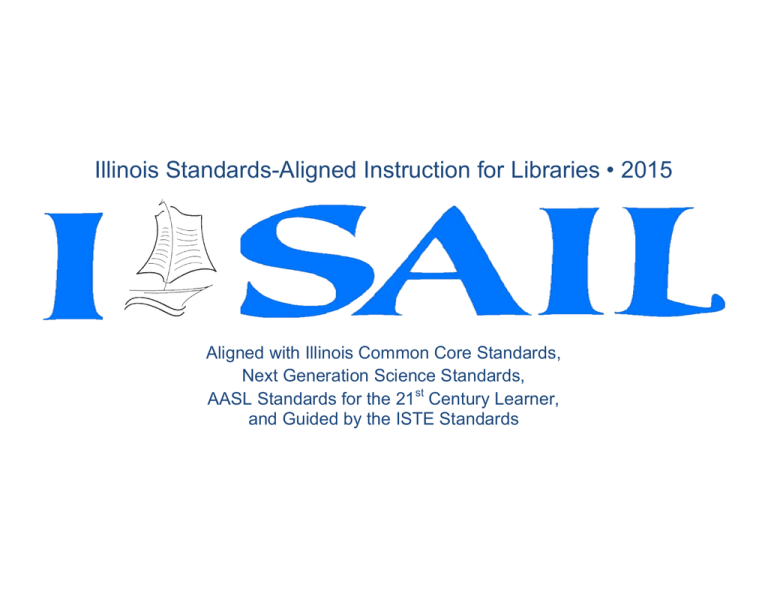
Illinois Standards-Aligned Instruction for Libraries • 2015
Aligned with Illinois Common Core Standards,
Next Generation Science Standards,
AASL Standards for the 21st Century Learner,
and Guided by the ISTE Standards
Permissions and Acknowledgements
Permission has been obtained from the following organizations to use their materials in this document:
Iowa City Community School District
American Association of School Librarians (AASL)
Guided by ISTE Standards for Students, Second Edition, © 2007, ISTE® (International Society for
Technology in Education), www.iste.org. All rights reserved.
*Next Generation Science Standards (NGSS) is a registered trademark of Achieve.
Permission to use, reproduce, and distribute this document in its entirety is hereby granted for private, noncommercial and educational purposes only. For any use of this material outside of the I-SAIL framework, permission
must be obtained individually from each of these organizations.
The Illinois School Library Media Association (ISLMA) would like to express its appreciation to the following
persons for assisting with the design and development of this project:
ISLMA Standards Committee consisting of:
2015: Holly Pantle, Chair; Laura Winters, Board Representative; Rebecca Swanson, Becky Robinson, Jennifer Campbell,
Angie Green, Pat Salvatini, Dan Heaver, Nancy Wadin, Emily Pickell.
2011: Becky Robinson, Chair; Erin Wyatt, Board Representative; Pam Kramer, Adviser
Katie Alexander, Vandora Elfrink, Inma Galan-Leonard, Angie Green, Marianne O'Keefe,
Pat Salvatini, Christy Semande, Paula Shapiro, Karen Smith-Cox.
2008: Becky Robinson, Chair;
Connie Amon, Dorsey Chambers, Kristen Considine, Angie Green,
John Moranski, Daniel Russo, Christy Semande.
*NGSS is a registered trademark of Achieve. Neither Achieve nor the lead states and partners that developed the Next Generation Science Standards was
involved in the production of, and does not endorse, this product.
Purpose
To empower, educate, and encourage school library information specialists to plan strategically with other teachers
to incorporate information literacy skills in lessons and thereby provide college and career readiness for students.
Vision
The vision of the ISLMA Standards Committee is that this framework will be used to aid in demonstrating the crosscurricular value of school libraries. If used properly, this framework, along with collaboration with other classroom
teachers, will provide the data many administrators use for making decisions.
History
Annually, the Alliance Library System consulting staff (now part of RAILS-Reaching Across Illinois Library System)
conducted site visits at each of its member libraries. In 2007, the staff noticed a need for an information literacy or
library skills curriculum aligned with the Illinois Learning Standards and the new American Association for School
Librarians (AASL) standards. In January 2008, a focus group researched sample curricula and drafted the format of
the final tool. In August 2008, the Alliance Library System staff, with the help of member librarians, published the
first version in CD format and as an online wiki. In October 2008, the framework was presented to the Illinois School
Library Media Association (ISLMA) for adoption as a statewide model. The 2011 revision occurred as a response to
the adoption of the Illinois Common Core Standards in English and Math. The 2015 revision occurred as a response
to the Next Generation Science Standards. The I-SAIL document will continue to be revised as needed to maintain
its currency and usefulness.
I-SAIL Standards
Standard 1: Access information efficiently and effectively to
inquire, think critically, and gain knowledge
• Recognize the need for information
• Formulate questions based on information needs
• Identify various potential sources of information
• Develop and use successful strategies for locating
information
• Seek information from diverse sources
Standard 4: Appreciate literature and other creative
expressions of thoughts and ideas and pursue knowledge
related to personal interests and aesthetic growth
• Cultivate a love of reading and become a self-motivated
reader
• Develop a knowledge of genres and literary elements
• Derive meaning from informational texts in various
formats
Standard 2: Evaluate information critically and competently
• Determine accuracy, relevance, and comprehensiveness
of information
• Distinguish among fact, point of view, and opinion
• Identify inaccurate and misleading information
• Select information appropriate to the problem or question
Standard 5: Understand and practice Internet safety when
using any electronic media for educational, social, or
recreational purposes
• Practice strategies that promote personal safety and
protect online and offline reputation
• Recognize that networked environments are public
places governed by codes of ethical behavior
• Practice positive digital citizenship
• Distinguish website authority, validity, and purpose
• Understand the need for protecting personal privacy
when using public access to digital sources
• Protect personal information and electronic devices in an
online environment
Standard 3: Use information accurately, creatively, and
ethically to share knowledge and to participate
collaboratively and productively as a member of a
democratic society
• Organize information for practical application
• Integrate new information into own schema
• Produce and communicate information and ideas in
appropriate formats
• Use problem-solving techniques to devise strategies for
improving process or product
• Practice ethical behavior when using print and digital
resources (including freedom of speech, intellectual
freedom, copyright, and plagiarism)
RevisedonJanuary11,2016
KINDERGARTEN
5
KINDERGARTEN
Standard 1
LIBRARY BENCHMARKS
Access information efficiently and
effectively to inquire, think critically,
and gain knowledge
A. Locate parts of a book
B. Understand basic organizational pattern of library
•
•
•
•
•
Recognize the need for information
Formulate questions based on information
needs
Identify various potential sources of
information
Develop and use successful strategies for
locating information
Seek information from diverse sources
LIBRARY OBJECTIVES
1. Identify title page, author, title, page number, and spine
2. Learn where picture books and easy books are located in the library
3. Ask where to find a book to read
English/Language Arts Strand Code: RL=Reading Literature; RI=Reading Informational Text; RF=Reading Foundational Skills; W=Writing; SL=Speaking and Listening; L=Language; RH=Reading in
History/Social Studies; RST=Reading in Science and Technical Subjects; WHST=Writing in History/Social Studies, Science, and Technical Subjects; CC=Common Core
Math Standards Code: OA=Operations and Algebraic Thinking; NBT=Number and Operations in Base 10; MD=Measurements and Data; G=Geometry; NF=Number and Operations-Fractions;
RP=Rations and Proportional Relationships; NS=Number System; EE=Expressions and Equations; SP=Statistics and Probability; A=Algebra
RevisedonJanuary11,2016
COMMON CORE STANDARDS
KINDERGARTEN
NGSS
Reading Literature
Key Ideas and Details
CC.K.RL.1 With prompting and support, ask and
answer questions about key details in a text.
Craft and Structure
CC.K.RL.4 Ask and answer questions about
unknown words in a text.
CC.K.RL.5 Recognize common types of texts
(e.g., storybooks, poems).
CC.K.RL.6 With prompting and support, name
the author and illustrator of a story and define
the role of each in telling the story.
Integration of Knowledge and Ideas
CC.K.RL.7 With prompting and support, describe
the relationship between illustrations and the
story in which they appear (e.g., what
moment in a story an illustration depicts).
Earth Science
Reading Informational Text
Engineering,
Technology, and
Applications of Science
Craft and Structure
CC.K.RI.4 With prompting and support, ask and
answer questions about unknown words in a
text.
CC.K.RI.5 Identify the front cover, back cover,
and title page of a book.
CC.K.RI.6 Name the author and illustrator of a
text and define the role of each in presenting
the ideas or information in a text.
Integration of Knowledge and Ideas
CC.K.RI.7 With prompting and support, describe
Earth’s Systems
K-ESS2-1 Use and share
observations of local
weather conditions to
describe patterns over
time.
Earth and Human Activity
K-ESS3-2 Ask questions to
obtain information
about the purpose of
weather forecasting to
prepare for, and
respond to, severe
weather.
Engineering Design
K-2-ETS1-1 Ask questions,
make observations, and
gather information
about a situation people
want to change to define
a simple problem that
can be solved through
the development of a
AASL STANDARDS
FOR THE 21ST
CENTURY LEARNER
1.1.2 Use prior and background
knowledge as context for new
learning.
1.1.3 Develop and refine a range of
questions to frame search for
new understanding.
1.1.6 Read, view, and listen for
information presented in any
format (e.g., textual, visual,
media, digital) in order to make
inferences and gather meaning.
1.1.7 Make sense of information
gathered from diverse sources
by identifying misconceptions,
main and supporting ideas,
conflicting information, and
point of view or bias.
1.1.9 Collaborate with others to
broaden and deepen
understanding.
1.3.4 Contribute to the exchange of
ideas within the learning
community.
1.4.1 Monitor own information
seeking processes for
effectiveness and progress, and
adapt as necessary.
1.4.2 Use interaction with and
feedback from teachers and
peers to guide own inquiry
process.
1.4.3 Monitor gathered information
6
ISTE STANDARDS:
STUDENTS
3. Research and Information Fluency
Students apply digital tools to gather,
evaluate, and use information. Students:
b. locate, organize, analyze, evaluate,
synthesize, and ethically use
information from a variety of sources
and media.
c. evaluate and select information sources
and digital tools based on the
appropriateness to specific tasks.
English/Language Arts Strand Code: RL=Reading Literature; RI=Reading Informational Text; RF=Reading Foundational Skills; W=Writing; SL=Speaking and Listening; L=Language; RH=Reading in
History/Social Studies; RST=Reading in Science and Technical Subjects; WHST=Writing in History/Social Studies, Science, and Technical Subjects; CC=Common Core
Math Standards Code: OA=Operations and Algebraic Thinking; NBT=Number and Operations in Base 10; MD=Measurements and Data; G=Geometry; NF=Number and Operations-Fractions;
RP=Rations and Proportional Relationships; NS=Number System; EE=Expressions and Equations; SP=Statistics and Probability; A=Algebra
RevisedonJanuary11,2016
the relationship between illustrations and the
text in which they appear (e.g., what person,
place, thing, or idea in the text an illustration
depicts).
CC.K.RI.8 With prompting and support, identify
the reasons an author gives to support
points.
CC.K.RI.9 With prompting and support, identify
basic similarities in and differences between
two texts on the same topic (e.g., in
illustrations, descriptions, or procedures).
Reading Foundational Skills
Print Concepts
CC.K.RF.1 Demonstrate understanding of the
organization and basic features of print.
Writing
Research to Build and Present Knowledge
CC.K.W.8 With guidance and support from
adults, recall information from experiences or
gather information from provided sources to
answer a question.
Speaking and Listening
Comprehension and Collaboration
CC.K.SL.1 Participate in collaborative
conversations with diverse partners about
kindergarten topics and texts with peers and
adults in small and larger groups.
CC.K.SL.1.b Continue a conversation through
multiple exchanges.
CC.K.SL.2 Confirm understanding of a text read
aloud or information presented orally or
through other media by asking and
answering questions about key details and
KINDERGARTEN
new or improved object
or tool.
and assess for gaps or
weaknesses.
1.4.4 Seek appropriate help when
needed.
2.1.5 Collaborate with others to
exchange ideas, develop new
understandings, make
decisions, and solve problems.
2.1.6 Use the writing process,
media and visual literacy, and
technology skills to create
products that express new
understandings.
2.2.1 Demonstrate flexibility in use
of resources by adapting
information strategies to each
specific resource and by
seeking additional resources
when clear conclusions cannot
be drawn.
2.3.1 Connect understanding to the
real world.
2.4.1 Determine how to act on
information (accept, reject,
modify).
3.1.2 Participate and collaborate as
members of a social and
intellectual network of learners.
3.2.2 Show social responsibility by
participating actively with others
in learning situations and by
contributing questions and
ideas during group discussions.
4.1.3 Respond to literature and
creative expressions of ideas in
various formats and genres.
English/Language Arts Strand Code: RL=Reading Literature; RI=Reading Informational Text; RF=Reading Foundational Skills; W=Writing; SL=Speaking and Listening; L=Language; RH=Reading in
History/Social Studies; RST=Reading in Science and Technical Subjects; WHST=Writing in History/Social Studies, Science, and Technical Subjects; CC=Common Core
Math Standards Code: OA=Operations and Algebraic Thinking; NBT=Number and Operations in Base 10; MD=Measurements and Data; G=Geometry; NF=Number and Operations-Fractions;
RP=Rations and Proportional Relationships; NS=Number System; EE=Expressions and Equations; SP=Statistics and Probability; A=Algebra
7
RevisedonJanuary11,2016
requesting clarification if something is not
understood.
CC.K.SL.3 Ask and answer questions in order to
seek help, get information, or clarify
something that is not understood.
Presentation of Knowledge and Ideas
CC.K.SL.4 Describe familiar people, places,
things, and events and, with prompting and
support, provide additional detail.
KINDERGARTEN
4.1.5 Connect ideas to own
interests and previous
knowledge and experience.
4.3.2 Recognize that resources are
created for a variety of
purposes.
Language
Conventions of Standard English
CC.K.L.1.d Understand and use question words
(interrogatives) (e.g., who, what, where,
when, why, how).
Vocabulary Acquisition and Use
CC.K.L.4 Determine or clarify the meaning of
unknown and multiple-meaning words and
phrases based on kindergarten reading and
content.
CC.K.L.5.a Sort common objects into categories
(e.g., shapes, foods) to gain a sense of the
concepts the categories represent.
CC.K.L.6 Use words and phrases acquired
through conversations, reading and being
read to, and responding to texts.
Measurements and Data
CC.K.MD.3 Classify objects and count the
number of objects in each category. Classify
objects into given categories; count the
numbers of objects in each category and sort
the categories by count. (Limit category
counts to be less than or equal to 10.)
English/Language Arts Strand Code: RL=Reading Literature; RI=Reading Informational Text; RF=Reading Foundational Skills; W=Writing; SL=Speaking and Listening; L=Language; RH=Reading in
History/Social Studies; RST=Reading in Science and Technical Subjects; WHST=Writing in History/Social Studies, Science, and Technical Subjects; CC=Common Core
Math Standards Code: OA=Operations and Algebraic Thinking; NBT=Number and Operations in Base 10; MD=Measurements and Data; G=Geometry; NF=Number and Operations-Fractions;
RP=Rations and Proportional Relationships; NS=Number System; EE=Expressions and Equations; SP=Statistics and Probability; A=Algebra
8
RevisedonJanuary11,2016
KINDERGARTEN
9
KINDERGARTEN
Standard 2
LIBRARY BENCHMARKS
Evaluate information critically and
competently
A. Learn the difference between fact and fiction
B. Select books appropriate to interest
C. Answer questions with appropriate resources
• Determine accuracy, relevance, and
comprehensiveness of information
• Distinguish among fact, point of view, and
opinion
• Identify inaccurate and misleading
information
• Select information appropriate to the
problem or question
LIBRARY OBJECTIVES
1.
2.
3.
4.
Use pictures and objects to extract information
Make book selections using simple scanning techniques (e.g., cover and illustrations)
Listen to and follow directions
Make simple decisions
English/Language Arts Strand Code: RL=Reading Literature; RI=Reading Informational Text; RF=Reading Foundational Skills; W=Writing; SL=Speaking and Listening; L=Language; RH=Reading in
History/Social Studies; RST=Reading in Science and Technical Subjects; WHST=Writing in History/Social Studies, Science, and Technical Subjects; CC=Common Core
Math Standards Code: OA=Operations and Algebraic Thinking; NBT=Number and Operations in Base 10; MD=Measurements and Data; G=Geometry; NF=Number and Operations-Fractions;
RP=Rations and Proportional Relationships; NS=Number System; EE=Expressions and Equations; SP=Statistics and Probability; A=Algebra
RevisedonJanuary11,2016
COMMON CORE STANDARDS
KINDERGARTEN
NGSS
Reading Literature
Physical Science
Key Ideas and Details
CC.K.RL.1 With prompting and support, ask and
answer questions about key details in a text.
Matter and Stability:
Forces and Interactions
K-PS2-1 Plan and conduct
an investigation to
compare the effects
of different strengths or
different directions of
pushes and pulls on the
motion of an object.
K-PS2-2 Analyze data to
determine if a design
solution works as
intended to change the
speed or direction of an
object with a push or a
pull.
Energy
K-PS3-1 Make observations
to determine the effect
of sunlight on Earth’s
surface.
Reading Informational Text
Key Ideas and Details
CC.K.RI.2 With prompting and support, identify the
main topic and retell key details of a text.
Writing
Production and Distribution of Writing
CC.K.W.5 With guidance and support from adults,
respond to questions and suggestions from peers
and add details to strengthen writing as needed.
CC.K.W.6 With guidance and support from adults,
explore a variety of digital tools to produce and
publish writing, including in collaboration with
peers.
Speaking and Listening
Presentation of Knowledge and Ideas
CC.K.SL.5 Add drawings or other visual displays to
descriptions as desired to provide additional detail.
Life Science
From Molecules to
Organisms: Structures and
Processes
K-LS1-1 Use observations to
describe patterns of what
plants and animals
(including humans) need
to survive.
10
AASL STANDARDS
FOR THE 21ST
CENTURY LEARNER
1.1.3 Develop and refine a range of
questions to frame search for
new understanding.
1.1.6 Read, view, and listen for
information presented in any
format (e.g., textual, visual,
media, digital) in order to make
inferences and gather
meaning.
1.1.7 Make sense of information
gathered from diverse sources
by identifying misconceptions,
main and supporting ideas,
conflicting information, and
point of view or bias.
2.1.2 Organize knowledge so that it
is useful.
2.1.4 Use technology and other
information tools to analyze
and organize information.
2.1.5 Collaborate with others to
exchange ideas, develop new
understandings, make
decisions, and solve problems.
2.1.6 Use the writing process,
media and visual literacy, and
technology skills to create
products that express new
understandings.
2.2.2 Use both divergent and
convergent thinking to
formulate alternative
conclusions and test them
ISTE STANDARDS:
STUDENTS
1. Creativity and Innovation
Students demonstrate creative
thinking, construct knowledge, and
develop innovative products and
processes using technology.
Students:
b. create original works as a
means of personal or group
expression.
2. Communication and
Collaboration
Students use digital media and
environments to communicate and
work collaboratively, including at a
distance, to support individual
learning and contribute to the
learning of others. Students:
a. interact, collaborate, and
publish with peers, experts, or
others employing a variety of
digital environments and
media.
b. communicate information and
ideas effectively to multiple
audiences using a variety of
media and formats.
d. contribute to project teams to
produce original works or
solve problems.
3. Research and Information
Fluency
Students apply digital tools to
English/Language Arts Strand Code: RL=Reading Literature; RI=Reading Informational Text; RF=Reading Foundational Skills; W=Writing; SL=Speaking and Listening; L=Language; RH=Reading in
History/Social Studies; RST=Reading in Science and Technical Subjects; WHST=Writing in History/Social Studies, Science, and Technical Subjects; CC=Common Core
Math Standards Code: OA=Operations and Algebraic Thinking; NBT=Number and Operations in Base 10; MD=Measurements and Data; G=Geometry; NF=Number and Operations-Fractions;
RP=Rations and Proportional Relationships; NS=Number System; EE=Expressions and Equations; SP=Statistics and Probability; A=Algebra
RevisedonJanuary11,2016
KINDERGARTEN
Earth Science
Earth’s Systems
K-ESS2-1 Use and share
observations of local
weather conditions to
describe patterns over
time.
K-ESS2-2 Construct an
argument supported by
evidence for how plants
and animals (including
humans) can change the
environment to meet their
needs.
Earth and Human Activity
K-ESS3-2 Ask questions to
obtain information
about the purpose of
weather forecasting to
prepare for, and respond
to, severe weather.
Engineering,
Technology, and
Applications of Science
Engineering Design
K-2-ETS1-1 Ask questions,
make observations, and
gather information
about a situation people
want to change to define
a simple problem that
can be solved through
the development of a
new or improved object
or tool.
11
against the evidence.
2.2.4 Demonstrate personal
productivity by completing
products to express learning.
2.3.1 Connect understanding to the
real world.
2.3.2 Consider diverse and global
perspectives in drawing
conclusions.
2.4.1 Determine how to act on
information (accept, reject,
modify).
2.4.4 Develop directions for future
investigations.
3.1.3 Use writing and speaking
skills to communicate new
understandings effectively.
3.2.3 Demonstrate teamwork by
working productively with
others.
3.4.1 Access the process by which
learning was achieved in order
to revise strategies and learn
more effectively in the future
gather, evaluate, and use
information. Students:
a. plan strategies to guide inquiry.
b. locate, organize, analyze,
evaluate, synthesize, and
ethically use information from
a variety of sources and
media.
c. evaluate and select information
sources and digital tools
based on the appropriateness
to specific tasks.
4. Critical Thinking, Problem
Solving, and Decision Making
Students use critical thinking skills
to plan and conduct research,
manage projects, solve problems,
and make informed decisions
using appropriate digital tools and
resources. Students:
c. collect and analyze data to
identify solutions and/or make
informed decisions.
d. use multiple processes and
diverse perspectives to
explore alternative solutions.
5. Digital Citizenship
Students understand human,
cultural, and societal issues
related to technology and practice
legal and ethical behavior.
Students:
a. advocate and practice safe,
legal, and responsible use of
information and technology.
b. exhibit a positive attitude toward
using technology that supports
collaboration, learning, and
English/Language Arts Strand Code: RL=Reading Literature; RI=Reading Informational Text; RF=Reading Foundational Skills; W=Writing; SL=Speaking and Listening; L=Language; RH=Reading in
History/Social Studies; RST=Reading in Science and Technical Subjects; WHST=Writing in History/Social Studies, Science, and Technical Subjects; CC=Common Core
Math Standards Code: OA=Operations and Algebraic Thinking; NBT=Number and Operations in Base 10; MD=Measurements and Data; G=Geometry; NF=Number and Operations-Fractions;
RP=Rations and Proportional Relationships; NS=Number System; EE=Expressions and Equations; SP=Statistics and Probability; A=Algebra
RevisedonJanuary11,2016
KINDERGARTEN
K-2-ETS1-3 Analyze data
from tests of two objects
designed to solve the
same problem to
compare the strengths
and weaknesses of how
each performs.
12
productivity.
6. Technology Operations and
Concepts
Students demonstrate a sound
understanding of technology
concepts, systems, and
operations. Students:
a. understand and use technology
systems.
English/Language Arts Strand Code: RL=Reading Literature; RI=Reading Informational Text; RF=Reading Foundational Skills; W=Writing; SL=Speaking and Listening; L=Language; RH=Reading in
History/Social Studies; RST=Reading in Science and Technical Subjects; WHST=Writing in History/Social Studies, Science, and Technical Subjects; CC=Common Core
Math Standards Code: OA=Operations and Algebraic Thinking; NBT=Number and Operations in Base 10; MD=Measurements and Data; G=Geometry; NF=Number and Operations-Fractions;
RP=Rations and Proportional Relationships; NS=Number System; EE=Expressions and Equations; SP=Statistics and Probability; A=Algebra
RevisedonJanuary11,2016
KINDERGARTEN
13
KINDERGARTEN
Standard 3
LIBRARY BENCHMARKS
A. Communicate results of information search in format appropriate for content
Use information accurately,
B. Recognize ownership of written and illustrated material
C. Observe Internet guidelines and protocols as defined in the district’s policies
creatively, and ethically to share
knowledge and to participate
collaboratively and productively as a LIBRARY OBJECTIVES
member of a democratic society
• Organize information for practical
application
• Integrate new information into own schema
• Produce and communicate information and
ideas in appropriate formats
• Use problem-solving techniques to devise
strategies for revising and improving
process and product
• Practice ethical behavior when using print
and digital resources (including freedom of
speech, intellectual freedom, copyright, and
plagiarism)
1. Collaborate with other students to solve information problems
2. Begin to organize information with guidance using such techniques as webbing, pictograms,
KWLs, and Y charts
3. Present, perform, share, and evaluate the results of information search in a new form
4. Identify authors and illustrators
5. Share different points of view and opinions
6. Access preselected digital sources for information needs
English/Language Arts Strand Code: RL=Reading Literature; RI=Reading Informational Text; RF=Reading Foundational Skills; W=Writing; SL=Speaking and Listening; L=Language; RH=Reading in
History/Social Studies; RST=Reading in Science and Technical Subjects; WHST=Writing in History/Social Studies, Science, and Technical Subjects; CC=Common Core
Math Standards Code: OA=Operations and Algebraic Thinking; NBT=Number and Operations in Base 10; MD=Measurements and Data; G=Geometry; NF=Number and Operations-Fractions;
RP=Rations and Proportional Relationships; NS=Number System; EE=Expressions and Equations; SP=Statistics and Probability; A=Algebra
RevisedonJanuary11,2016
COMMON CORE STANDARDS
KINDERGARTEN
NGSS
Reading Literature
Physical Science
Integration of Knowledge and Ideas
CC.K.RL.9 With prompting and support, compare and
contrast the adventures and experiences of
characters in familiar stories.
Range of Reading and Level of Text Complexity
CC.K.RL.10 Actively engage in group reading activities
with purpose and understanding.
Matter and Stability:
Forces and Interactions
K-PS2-1 Plan and conduct
an investigation to
compare the effects
of different strengths or
different directions of
pushes and pulls on the
motion of an object.
Energy
K-PS3-1 Make observations
to determine the effect
of sunlight on Earth’s
surface.
Reading Informational Text
Key Ideas and Details
CC.K.RI.3 With prompting and support, describe the
connection between two individuals, events, ideas,
or pieces of information in a text.
Range of Reading and Level of Text Complexity
CC.K.RI.10 Actively engage in group reading activities
with purpose and understanding.
Writing
Text Types and Purposes
CC.K.W.1 Use a combination of drawing, dictating, and
writing to compose opinion pieces in which they tell
a reader the topic or the name of the book they are
writing about and state an opinion or preference
about the topic or book (e.g., My favorite book is . .
.).
CC.K.W.2 Use a combination of drawing, dictating, and
writing to compose informative/explanatory texts in
which they name what they are writing about and
supply some information about the topic.
CC.K.W.3 Use a combination of drawing, dictating, and
writing to narrate a single event or several loosely
Life Science
From Molecules to
Organisms: Structures and
Processes
K-LS1-1 Use observations to
describe patterns of what
plants and animals
(including humans) need
to survive.
Earth Science
Earth’s Systems
K-ESS2-1 Use and share
observations of local
weather conditions to
describe patterns over
14
AASL STANDARDS
FOR THE 21ST
CENTURY LEARNER
ISTE STANDARDS:
STUDENTS
1.1.6 Read, view, and listen for
information presented in any
format (e.g., textual, visual,
media, digital) in order to make
inferences and gather
meaning.
1.1.7 Make sense of information
gathered from diverse sources
by identifying misconceptions,
main and supporting ideas,
conflicting information, and
point of view or bias.
1.1.9 Collaborate with others to
broaden and deepen
understanding.
1.3.1 Respect copyright/intellectual
property rights of creators and
producers.
4. Critical Thinking, Problem
Solving, and Decision Making
Students use critical thinking
skills to plan and conduct
research, manage projects, solve
problems, and make informed
decisions using appropriate
digital tools and resources.
Students:
b. plan and manage activities to
develop a solution or
complete a project.
c. collect and analyze data to
identify solutions and/or
make informed decisions.
d. use multiple processes and
diverse perspectives to
explore alternative solutions.
2.1.4 Use technology and other
information tools to analyze
and organize information.
2.1.5 Collaborate with others to
exchange ideas, develop new
understandings, make
decisions, and solve problems.
2.1.6 Use the writing process,
media and visual literacy, and
technology skills to create
products that express new
understandings.
2.2.4 Demonstrate personal
productivity by completing
products to express learning.
5. Digital Citizenship
Students understand human,
cultural, and societal issues
related to technology and
practice legal and ethical
behavior. Students:
a. advocate and practice safe,
legal, and responsible use of
information and technology.
b. exhibit a positive attitude
toward using technology that
supports collaboration,
learning, and productivity.
d. exhibit leadership for digital
citizenship.
English/Language Arts Strand Code: RL=Reading Literature; RI=Reading Informational Text; RF=Reading Foundational Skills; W=Writing; SL=Speaking and Listening; L=Language; RH=Reading in
History/Social Studies; RST=Reading in Science and Technical Subjects; WHST=Writing in History/Social Studies, Science, and Technical Subjects; CC=Common Core
Math Standards Code: OA=Operations and Algebraic Thinking; NBT=Number and Operations in Base 10; MD=Measurements and Data; G=Geometry; NF=Number and Operations-Fractions;
RP=Rations and Proportional Relationships; NS=Number System; EE=Expressions and Equations; SP=Statistics and Probability; A=Algebra
RevisedonJanuary11,2016
linked events, tell about the events in the order in
which they occurred, and provide a reaction to what
happened.
Production and Distribution of Writing
CC.K.W.6 With guidance and support from adults,
explore a variety of digital tools to produce and
publish writing, including in collaboration with peers.
Research to Build and Present Knowledge
CC.K.W.7 Participate in shared research and writing
projects (e.g., explore a number of books by a
favorite author and express opinions about them).
Speaking and Listening
Presentation of Knowledge and Ideas
CC.K.SL.4 Describe familiar people, places, things, and
events and, with prompting and support, provide
additional detail.
Language
Conventions of Standard English
CC.K.L.1.f Produce and expand complete sentences in
shared language activities.
KINDERGARTEN
time.
K-ESS2-2 Construct an
argument supported by
evidence for how plants
and animals (including
humans) can change the
environment to meet
their needs.
Earth and Human Activity
K-ESS3-2 Ask questions to
obtain information
about the purpose of
weather forecasting to
prepare for, and respond
to, severe weather.
Engineering,
Technology, and
Applications of Science
Engineering Design
K-2-ETS1-2 Develop a
simple sketch, drawing,
or physical model to
illustrate how the shape
of an object helps it
function as needed to
solve a given problem.
K-2-ETS1-3 Analyze data
from tests of two objects
designed to solve the
same problem to
compare the strengths
and weaknesses of how
each performs.
15
2.3.3 Use valid information and
reasoned conclusions to make
ethical decisions.
2.4.3 Recognize new knowledge
and understanding.
3.1.1 Conclude an inquiry-based
research process by sharing
new understandings and
reflecting on the learning.
3.1.2 Participate and collaborate as
members of a social and
intellectual network of learners.
3.1.3 Use writing and speaking
skills to communicate new
understandings effectively.
3.1.4 Use technology and other
information tools to organize
and display knowledge and
understanding in ways that
others can view, use, and
assess.
3.1.5 Connect learning to
community issues.
3.1.6 Use information and
technology ethically and
responsibly.
3.2.1 Demonstrate leadership and
confidence by presenting ideas
to others in both formal and
informal situations.
3.2.2 Show social responsibility by
participating actively with
others in learning situations
and by contributing questions
and ideas during group
discussions.
3.2.3 Demonstrate teamwork by
working productively with
others.
6. Technology Operations and
Concepts
Students demonstrate a sound
understanding of technology
concepts, systems, and
operations. Students:
a. understand and use
technology systems.
b. select and use applications
effectively and productively.
d. transfer current knowledge to
learning of new technologies.
English/Language Arts Strand Code: RL=Reading Literature; RI=Reading Informational Text; RF=Reading Foundational Skills; W=Writing; SL=Speaking and Listening; L=Language; RH=Reading in
History/Social Studies; RST=Reading in Science and Technical Subjects; WHST=Writing in History/Social Studies, Science, and Technical Subjects; CC=Common Core
Math Standards Code: OA=Operations and Algebraic Thinking; NBT=Number and Operations in Base 10; MD=Measurements and Data; G=Geometry; NF=Number and Operations-Fractions;
RP=Rations and Proportional Relationships; NS=Number System; EE=Expressions and Equations; SP=Statistics and Probability; A=Algebra
RevisedonJanuary11,2016
KINDERGARTEN
16
3.3.1 Solicit and respect diverse
perspectives while searching
for information, collaborating
with others, and participating
as a member of the
community.
3.3.2 Respect the differing interests
and experiences of others, and
seek a variety of viewpoints.
3.3.3 Use knowledge and
information skills and
dispositions to engage in public
conversation and debate
around issues of common
concern.
3.3.4 Create products that apply to
authentic, real-world contexts.
3.3.5 Contribute to the exchange of
ideas within and beyond the
learning community.
3.3.6 Use information and
knowledge in the service of
democratic values.
3.4.2 Assess the quality and
effectiveness of the learning
product.
3.4.3 Assess own ability to work
with others in a group setting
by evaluating varied roles,
leadership, and demonstrations
of respect for other viewpoints.
4.1.3 Respond to literature and
creative expressions of ideas in
various formats and genres.
4.1.6 Organize personal knowledge
in a way that can be called
upon easily.
4.3.1 Participate in the social
exchange of ideas, both
English/Language Arts Strand Code: RL=Reading Literature; RI=Reading Informational Text; RF=Reading Foundational Skills; W=Writing; SL=Speaking and Listening; L=Language; RH=Reading in
History/Social Studies; RST=Reading in Science and Technical Subjects; WHST=Writing in History/Social Studies, Science, and Technical Subjects; CC=Common Core
Math Standards Code: OA=Operations and Algebraic Thinking; NBT=Number and Operations in Base 10; MD=Measurements and Data; G=Geometry; NF=Number and Operations-Fractions;
RP=Rations and Proportional Relationships; NS=Number System; EE=Expressions and Equations; SP=Statistics and Probability; A=Algebra
RevisedonJanuary11,2016
KINDERGARTEN
17
electronically and in person.
4.3.4 Practice safe and ethical
behaviors in personal
electronic communication and
interaction
English/Language Arts Strand Code: RL=Reading Literature; RI=Reading Informational Text; RF=Reading Foundational Skills; W=Writing; SL=Speaking and Listening; L=Language; RH=Reading in
History/Social Studies; RST=Reading in Science and Technical Subjects; WHST=Writing in History/Social Studies, Science, and Technical Subjects; CC=Common Core
Math Standards Code: OA=Operations and Algebraic Thinking; NBT=Number and Operations in Base 10; MD=Measurements and Data; G=Geometry; NF=Number and Operations-Fractions;
RP=Rations and Proportional Relationships; NS=Number System; EE=Expressions and Equations; SP=Statistics and Probability; A=Algebra
RevisedonJanuary11,2016
KINDERGARTEN
18
KINDERGARTEN
Standard 4
LIBRARY BENCHMARKS
Appreciate literature and other
creative expressions of thoughts
and ideas and pursue knowledge
related to personal interests and
aesthetic growth
A.
B.
C.
D.
E.
F.
• Cultivate a love of reading and become a
self-motivated reader
• Develop a knowledge of genres and literary
elements
• Derive meaning from informational texts in
various formats
Use both auditory and visual clues to understand literature
Select an appropriate book of interest for personal enjoyment
Begin to identify different types and elements of literature
Begin to recognize information presented creatively in various nontextual formats
Ask for information related to personal interests
Select resources and materials based on interest, need, and appropriateness
LIBRARY OBJECTIVES
1.
2.
3.
4.
5.
6.
7.
8.
9.
10.
11.
Choose a book of interest from a provided assortment
Listen to traditional folklore such as nursery rhymes and fairy tales
Listen to fiction in picture book and short novel formats
Listen to nonfiction (biography, information books, poetry)
Identify literary elements such as character and setting
Respond to literature in participatory activities such as puppetry, finger plays, and drama
Engage with the work of various authors and illustrators
Enjoy award-winning literature
Begin to use print and nonprint materials
Appreciate reading for pleasure, for learning, and for finding answers
Use libraries, library staff, and library resources
English/Language Arts Strand Code: RL=Reading Literature; RI=Reading Informational Text; RF=Reading Foundational Skills; W=Writing; SL=Speaking and Listening; L=Language; RH=Reading in
History/Social Studies; RST=Reading in Science and Technical Subjects; WHST=Writing in History/Social Studies, Science, and Technical Subjects; CC=Common Core
Math Standards Code: OA=Operations and Algebraic Thinking; NBT=Number and Operations in Base 10; MD=Measurements and Data; G=Geometry; NF=Number and Operations-Fractions;
RP=Rations and Proportional Relationships; NS=Number System; EE=Expressions and Equations; SP=Statistics and Probability; A=Algebra
RevisedonJanuary11,2016
COMMON CORE STANDARDS
Reading Literature
Key Ideas and Details
CC.K.RL.3 With prompting and support, identify characters, settings,
and major events in a story.
Craft and Structure
CC.K.RL.5 Recognize common types of texts (e.g., storybooks,
poems).
CC.K.RL.6 With prompting and support, name the author and
illustrator of a story and define the role of each in telling the story.
Integration of Knowledge and Ideas
CC.K.RL.7 With prompting and support, describe the relationship
between illustrations and the story in which they appear (e.g., what
moment in a story an illustration depicts).
CC.K.RL.9 With prompting and support, compare and contrast the
adventures and experiences of characters in familiar stories.
Range of Reading and Level of Text Complexity
CC.K.RL.10 Actively engage in group reading activities with purpose
and understanding.
Reading Informational Text
Key Ideas and Details
CC.K.RI.1 With prompting and support, ask and answer questions
about key details in a text.
CC.K.RI.2 With prompting and support, identify the main topic and
retell key details of a text.
Craft and Structure
CC.K.RI.6 Name the author and illustrator of a text and define the role
of each in presenting the ideas or information in a text.
Integration of Knowledge and Ideas
CC.K.RI.7 With prompting and support, describe the relationship
between illustrations and the text in which they appear (e.g., what
person, place, thing, or idea in the text an illustration depicts).
KINDERGARTEN
AASL STANDARDS FOR
THE 21ST CENTURY
LEARNER
1.1.6 Read, view, and listen for
information presented in any format
(e.g., textual, visual, media, digital) in
order to make inferences and gather
meaning.
1.1.7 Make sense of information gathered
from diverse sources by identifying
misconceptions, main and supporting
ideas, conflicting information, and
point of view or bias.
1.1.9 Collaborate with others to broaden
and deepen understanding.
2.1.1 Continue an inquiry-based research
process by applying critical-thinking
skills (analysis, synthesis, evaluation,
organization) to information and
knowledge in order to construct new
understandings, draw conclusions,
and create new knowledge.
2.1.5 Collaborate with others to exchange
ideas, develop new understandings,
make decisions, and solve problems.
2.2.1 Demonstrate flexibility in the use of
resources by adapting information
strategies to each specific resource
and by seeking additional resources
when clear conclusions cannot be
drawn.
2.4.3 Recognize new knowledge and
understanding.
2.4.4 Develop directions for future
investigations.
19
ISTE STANDARDS:
STUDENTS
1. Creativity and Innovation
Students demonstrate creative thinking,
construct knowledge, and develop
innovative products and processes using
technology. Students:
c. use models and simulations to explore
complex systems and issues.
2. Communication and Collaboration
Students use digital media and
environments to communicate and work
collaboratively, including at a distance, to
support individual learning and contribute
to the learning of others. Students:
a. interact, collaborate, and publish with
peers, experts, or others employing a
variety of digital environments and
media.
3. Research and Information Fluency
Students apply digital tools to gather,
evaluate, and use information. Students:
b. locate, organize, analyze, evaluate,
synthesize, and ethically use
information from a variety of sources
and media.
4. Critical Thinking, Problem Solving,
and Decision Making
Students use critical thinking skills to plan
and conduct research, manage projects,
solve problems, and make informed
decisions using appropriate digital tools
and resources. Students:
English/Language Arts Strand Code: RL=Reading Literature; RI=Reading Informational Text; RF=Reading Foundational Skills; W=Writing; SL=Speaking and Listening; L=Language; RH=Reading in
History/Social Studies; RST=Reading in Science and Technical Subjects; WHST=Writing in History/Social Studies, Science, and Technical Subjects; CC=Common Core
Math Standards Code: OA=Operations and Algebraic Thinking; NBT=Number and Operations in Base 10; MD=Measurements and Data; G=Geometry; NF=Number and Operations-Fractions;
RP=Rations and Proportional Relationships; NS=Number System; EE=Expressions and Equations; SP=Statistics and Probability; A=Algebra
RevisedonJanuary11,2016
Reading Foundational Skills
Fluency
CC.K.RF.4 Read emergent-reader texts with purpose and
understanding.
Writing
Research to Build and Present Knowledge
CC.K.W.7 Participate in shared research and writing projects (e.g.,
explore a number of books by a favorite author and express
opinions about them).
Language
Conventions of Standard English
CC.K.L.1.f Produce and expand complete sentences in shared
language activities.
Vocabulary Acquisition and Use
CC.K.L.6 Use words and phrases acquired through conversations,
reading and being read to, and responding to texts.
KINDERGARTEN
3.1.2 Participate and collaborate as
members of a social and intellectual
network of learners.
3.2.2 Show social responsibility by
participating actively with others in
learning situations and by contributing
questions and ideas during group
discussions.
3.2.3 Demonstrate teamwork by working
productively with others.
3.3.5 Contribute to the exchange of ideas
within and beyond the learning
community.
4.1.1 Read, view, and listen for pleasure
and personal growth.
4.1.2 Read widely and fluently to make
connections with self, the world, and
previous reading.
4.1.3 Respond to literature and creative
expressions of ideas in various
formats and genres.
4.1.4 Seek information for personal
learning in a variety of formats and
genres.
4.1.5 Connect ideas to own interests and
previous knowledge and experience.
4.1.6 Organize personal knowledge in a
way that can be called upon easily.
4.2.1 Display curiosity by pursuing
interests through multiple resources.
4.2.2 Demonstrate motivation by seeking
information to answer personal
questions and interests, trying a
variety of formats and genres, and
displaying a willingness to go beyond
academic requirements.
4.2.3 Maintain openness to new ideas by
20
c. collect and analyze data to identify
solutions and/or make informed
decisions.
d. use multiple processes and diverse
perspectives to explore alternative
solutions.
5. Digital Citizenship
Students understand human, cultural, and
societal issues related to technology and
practice legal and ethical behavior.
Students:
a. advocate and practice safe, legal, and
responsible use of information and
technology.
b. exhibit a positive attitude toward using
technology that supports
collaboration, learning, and
productivity.
c. demonstrate personal responsibility for
lifelong learning.
6. Technology Operations and
Concepts
Students demonstrate a sound
understanding of technology concepts,
systems, and operations. Students:
b. select and use applications effectively
and productively.
d. transfer current knowledge to learning
of new technologies.
English/Language Arts Strand Code: RL=Reading Literature; RI=Reading Informational Text; RF=Reading Foundational Skills; W=Writing; SL=Speaking and Listening; L=Language; RH=Reading in
History/Social Studies; RST=Reading in Science and Technical Subjects; WHST=Writing in History/Social Studies, Science, and Technical Subjects; CC=Common Core
Math Standards Code: OA=Operations and Algebraic Thinking; NBT=Number and Operations in Base 10; MD=Measurements and Data; G=Geometry; NF=Number and Operations-Fractions;
RP=Rations and Proportional Relationships; NS=Number System; EE=Expressions and Equations; SP=Statistics and Probability; A=Algebra
RevisedonJanuary11,2016
KINDERGARTEN
considering divergent opinions,
changing opinions or conclusions
when evidence supports the change,
and seeking information about new
ideas encountered through academic
or personal experiences.
4.2.4 Show an appreciation for literature
by electing to read for pleasure and
expressing an interest in various
literary genres.
4.3.2 Recognize that resources are
created for a variety of purposes.
4.3.3 Seek opportunities for pursuing
personal and aesthetic growth.
4.4.1 Identify own areas of interest.
4.4.2 Recognize the limits of own
personal knowledge.
4.4.3 Recognize how to focus the efforts
in personal learning.
4.4.4 Interpret new information based on
cultural and social context.
4.4.5 Develop personal criteria for
gauging how effectively own ideas are
expressed.
4.4.6 Evaluate own ability to select
resources that are engaging and
appropriate for personal interests and
needs.
English/Language Arts Strand Code: RL=Reading Literature; RI=Reading Informational Text; RF=Reading Foundational Skills; W=Writing; SL=Speaking and Listening; L=Language; RH=Reading in
History/Social Studies; RST=Reading in Science and Technical Subjects; WHST=Writing in History/Social Studies, Science, and Technical Subjects; CC=Common Core
Math Standards Code: OA=Operations and Algebraic Thinking; NBT=Number and Operations in Base 10; MD=Measurements and Data; G=Geometry; NF=Number and Operations-Fractions;
RP=Rations and Proportional Relationships; NS=Number System; EE=Expressions and Equations; SP=Statistics and Probability; A=Algebra
21
RevisedonJanuary11,2016
KINDERGARTEN
22
KINDERGARTEN
Standard 5
LIBRARY BENCHMARKS
Understand and practice Internet
safety when using any electric
media for educational, social, or
recreational purposes
A. Understand personal and public information
B. Recognize the need for adult supervision
C. Use electronic devices safely and appropriately
• Practice strategies that promote personal
safety and protect online and offline
reputation
• Recognize that networked environments
are public places governed by codes of
ethical behavior
• Practice positive digital citizenship
• Distinguish website authority, validity, and
purpose
• Understand the need for protecting
personal privacy when using public access
to digital sources
• Protect personal information and electronic
devices in an online environment
LIBRARY OBJECTIVES
1. With guidance, identify personal information (name, gender, age, address, phone number,
name of school, screen name, etc.) and when it is appropriate to share this information
2. Use the Internet to visit approved websites with adult supervision or guidance
3. Practice good manners online, recognizing that online communication is between actual
people
4. Report uncomfortable situations to an adult
5. With guidance, identify approved content and advertising content
6. Operate and maintain equipment as directed (power-on/off, clean hands, gentle use)
English/Language Arts Strand Code: RL=Reading Literature; RI=Reading Informational Text; RF=Reading Foundational Skills; W=Writing; SL=Speaking and Listening; L=Language; RH=Reading in
History/Social Studies; RST=Reading in Science and Technical Subjects; WHST=Writing in History/Social Studies, Science, and Technical Subjects; CC=Common Core
Math Standards Code: OA=Operations and Algebraic Thinking; NBT=Number and Operations in Base 10; MD=Measurements and Data; G=Geometry; NF=Number and Operations-Fractions;
RP=Rations and Proportional Relationships; NS=Number System; EE=Expressions and Equations; SP=Statistics and Probability; A=Algebra
RevisedonJanuary11,2016
KINDERGARTEN
COMMON CORE STANDARDS
AASL STANDARDS FOR
THE 21ST CENTURY
LEARNER
Production and Distribution of Writing
CC.K.W.6 With guidance and support from adults, explore a variety of
digital tools to produce and publish writing, including in
collaboration with peers.
2.1.4 Use technology and other
information tools to analyze and
organize information.
2.1.6 Use the writing process, media and
visual literacy, and technology skills to
create products that express new
understandings.
Writing
3.1.3 Use writing and speaking skills to
communicate new understandings
effectively.
3.2.3 Demonstrate teamwork by working
productively with others.
23
ISTE STANDARDS:
STUDENTS
2. Communication and Collaboration
Students use digital media and
environments to communicate and work
collaboratively, including at a distance, to
support individual learning and contribute
to the learning of others. Students:
b. communicate information and ideas
effectively to multiple audiences using
a variety of media and formats.
c. develop cultural understanding and
global awareness by engaging with
learners of other cultures.
d. contribute to project teams to produce
original works or solve problems.
3. Research and Information Fluency
Students apply digital tools to gather,
evaluate, and use information. Students:
b. locate, organize, analyze, evaluate,
synthesize, and ethically use
information from a variety of sources
and media.
5. Digital Citizenship
Students understand human, cultural, and
societal issues related to technology and
practice legal and ethical behavior.
Students:
a. advocate and practice safe, legal, and
responsible use of information and
technology.
b. exhibit a positive attitude toward using
technology that supports collaboration,
learning, and productivity.
English/Language Arts Strand Code: RL=Reading Literature; RI=Reading Informational Text; RF=Reading Foundational Skills; W=Writing; SL=Speaking and Listening; L=Language; RH=Reading in
History/Social Studies; RST=Reading in Science and Technical Subjects; WHST=Writing in History/Social Studies, Science, and Technical Subjects; CC=Common Core
Math Standards Code: OA=Operations and Algebraic Thinking; NBT=Number and Operations in Base 10; MD=Measurements and Data; G=Geometry; NF=Number and Operations-Fractions;
RP=Rations and Proportional Relationships; NS=Number System; EE=Expressions and Equations; SP=Statistics and Probability; A=Algebra
RevisedonJanuary11,2016
KINDERGARTEN
24
c. demonstrate personal responsibility for
lifelong learning.
d. exhibit leadership for digital citizenship.
6. Technology Operations and
Concepts
Students demonstrate a sound
understanding of technology concepts,
systems, and operations. Students:
a. understand and use technology
systems.
b. select and use applications effectively
and productively.
c. troubleshoot systems and applications.
English/Language Arts Strand Code: RL=Reading Literature; RI=Reading Informational Text; RF=Reading Foundational Skills; W=Writing; SL=Speaking and Listening; L=Language; RH=Reading in
History/Social Studies; RST=Reading in Science and Technical Subjects; WHST=Writing in History/Social Studies, Science, and Technical Subjects; CC=Common Core
Math Standards Code: OA=Operations and Algebraic Thinking; NBT=Number and Operations in Base 10; MD=Measurements and Data; G=Geometry; NF=Number and Operations-Fractions;
RP=Rations and Proportional Relationships; NS=Number System; EE=Expressions and Equations; SP=Statistics and Probability; A=Algebra

